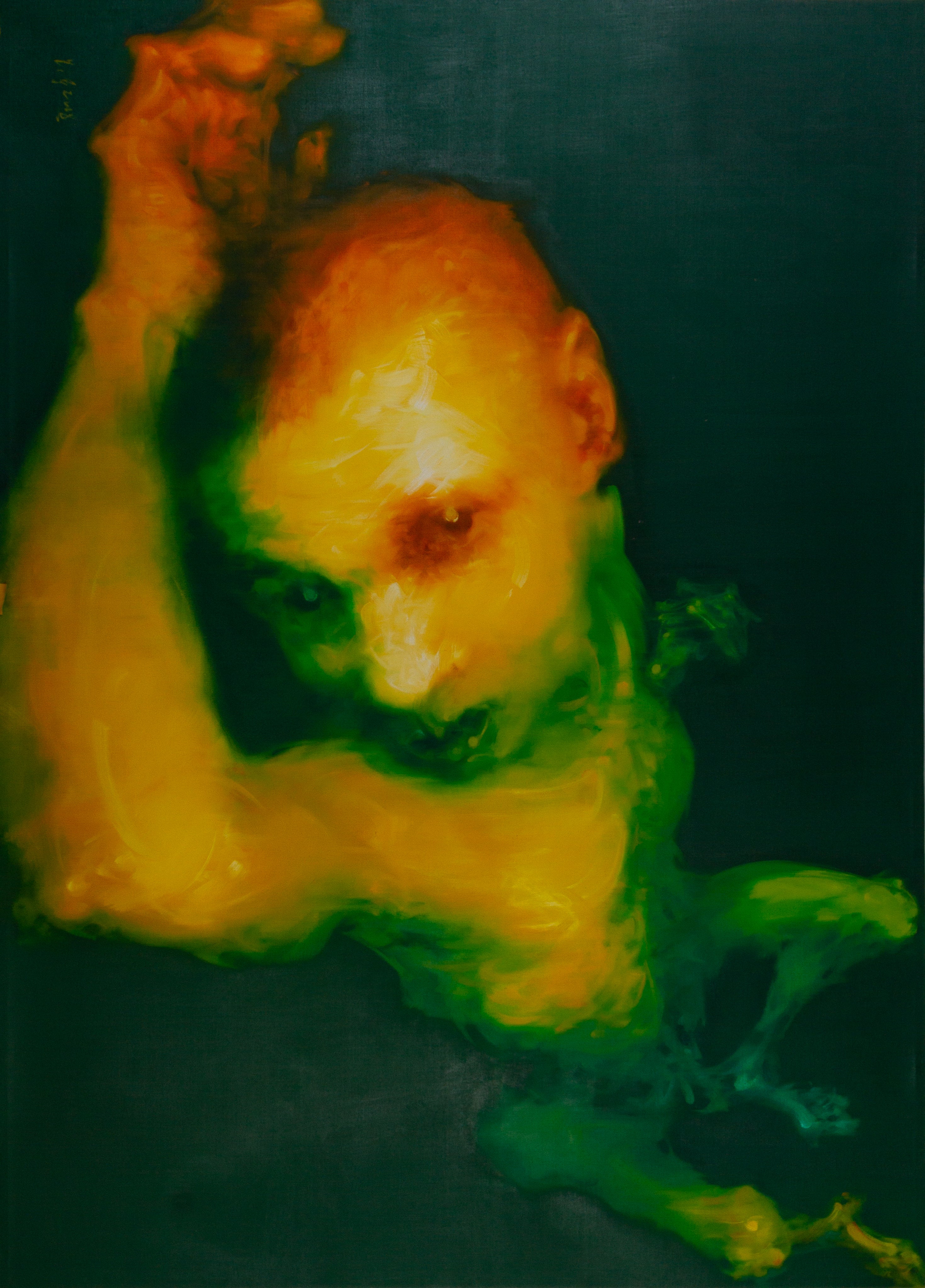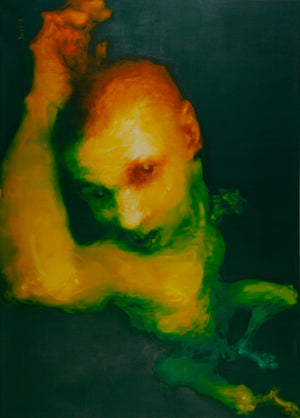Images of the Body No.5
Wu Jianjun
Artwork Details
Artwork Description
Title: Images of the Body No.5
Artist: Wu Jianjun (吴建军)
Date: 2008
Medium: Oil on canvas
Dimensions: 70.9 x 98.4 in (180 x 250 cm)
Artwork Identification
Images of the Body No.5 is a monumental painting by Wu Jianjun that captures a raw and visceral interpretation of the human figure. Rendered in molten hues of yellow, green, and orange against a stark, dark backdrop, the figure appears suspended in a state between formation and dissolution. The body lacks anatomical realism and instead evokes sensation, emotion, and elemental force.
Artistic Style and Influences
Wu Jianjun rejects traditional realism in favor of an expressive and psychological approach to the body. Drawing on his background in painting at the Fine Arts Institute of Chongqing, Wu explores corporeality as an abstraction of tension and inner energy. His technique recalls thermal imaging, where chromatic intensity reveals internal heat rather than surface form, merging figuration and abstraction into one fluid, emotionally charged field.
Historical Context
Painted in 2008, Images of the Body No.5 emerged during a period when Chinese contemporary artists were increasingly exploring introspective and existential themes. Wu Jianjun’s work distinguishes itself through its rejection of narrative, its lack of symbolic apparatus, and its primal immediacy—an aesthetic of the body in flux that transcends political or cultural commentary.
Provenance
Provenance documentation can be provided upon contact.
Condition and Conservation
The work is in very good condition, with a stable surface and no visible signs of deterioration or restoration.
Artistic Significance
Wu Jianjun’s Images of the Body No.5 exemplifies a profound artistic inquiry into the essence of human existence—stripped of story, stripped of spectacle. His paintings do not depict the body, but embody it. The piece is not an object of interpretation, but a confrontation—an invitation to feel, to reflect, and to remember the vulnerability and fire at the core of being human. As such, it remains one of the most compelling examples of somatic abstraction in Chinese contemporary art.


